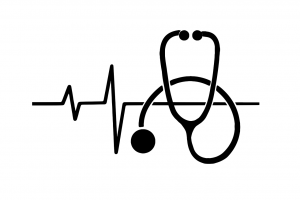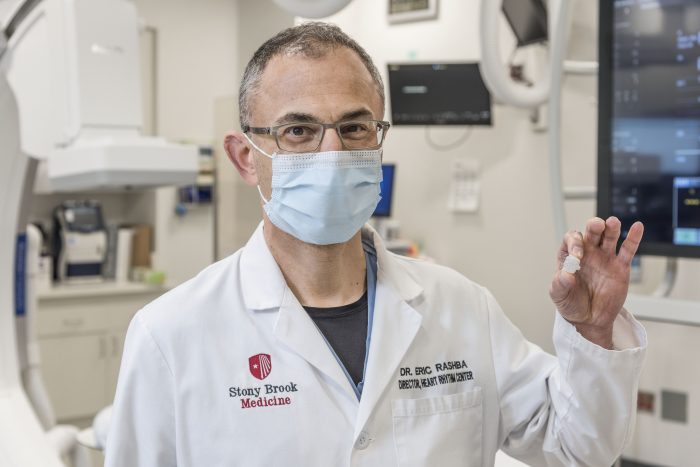By David Dunaief, M.D.

In February, we celebrate Valentine’s Day, a celebration of those we love, alongside American Heart Month, an invitation for us to build our awareness of heart-healthy habits.
The good news is that heart disease is on the decline due to several factors, including improved medicines, earlier treatment of risk factors, and an embrace of lifestyle modifications. While we are headed in the right direction, we can do better. Heart disease is ultimately preventable.
Can we reduce heart disease risks?
Major risk factors for heart disease include obesity, high cholesterol, high blood pressure, smoking and diabetes. Sadly, rates of both obesity and diabetes are rising. For patients with type 2 diabetes, 70 percent die of cardiovascular causes (1).
Key contributors also include inactivity and the standard American diet, which is rich in saturated fat and calories (2). This drives atherosclerosis, fatty streaks in the arteries.
Another potential risk factor is a resting heart rate greater than 80 beats per minute (bpm). In one study, healthy men and women had 18 and 10 percent increased risks of dying from a heart attack, respectively, for every increase of 10 bpm over 80 (3). A normal resting heart rate is usually between 60 and 100 bpm. Thus, you don’t have to have a racing heart rate, just one that is high-normal. All of these risk factors can be overcome.
When does medication help?
Cholesterol and blood pressure medications have been credited to some extent with reducing the risk of heart disease. Compliance with taking blood pressure medications has increased over the last 10 years from 33 to 50 percent, according to the American Society of Hypertension.
Statins have also played a key role in primary prevention. They are effective at lowering lipid levels, including total cholesterol and LDL — the “bad” cholesterol. In addition, they lower the inflammation levels that contribute to cardiovascular disease risk. The Jupiter trial showed a 55 percent combined reduction in heart disease, stroke and mortality from cardiovascular disease in healthy patients — those with a slightly elevated level of inflammation and normal cholesterol profile — with statins.
The downside of statins is their side effects. Statins have been shown to increase the risk of diabetes in intensive dosing, compared to moderate dosing (4). Many who are on statins also suffer from myopathy (muscle pain and cramping).
I’m often approached by patients on statins with this complaint. Their goal when they come to see me is to reduce and ultimately discontinue statins by modifying their diet and exercise plans.
Lifestyle modification is a powerful ally.
How much do lifestyle changes reduce heart disease risk?
The Baltimore Longitudinal Study of Aging investigated 501 healthy men and their risk of dying from cardiovascular disease. The authors concluded that those who consumed five servings or more of fruits and vegetables daily with <12 percent saturated fat had a 76 percent reduction in their risk of dying from heart disease compared to those who did not (5). The authors theorized that eating more fruits and vegetables helped to displace saturated fats from the diet. These results are impressive and, to achieve them, they only required a modest change in diet.
The Nurses’ Health Study shows that these results are also seen in women. Lifestyle modification reduced the risk of sudden cardiac death (SCD) (6). Many times, this is the first manifestation of heart disease in women. The authors looked at four parameters of lifestyle modification, including a Mediterranean-type diet, exercise, smoking and body mass index. There was a decrease in SCD that was dose-dependent, meaning the more factors incorporated, the greater the risk reduction. There was as much as a 92 percent decrease in SCD risk when all four parameters were followed. Thus, it is possible to almost eliminate the risk of SCD for women with lifestyle modifications.
In a cohort study of high-risk participants and those with heart disease, patients implemented extensive lifestyle modification: a plant-based, whole foods diet accompanied by exercise and stress management. The results showed an improvement in biomarkers, as well as in cognitive function and overall quality of life. The best part is the results occurred over a very short period — three months from the start of the trial (7). Outside of this study environment, many of my own patients have experienced similar results.
How do you monitor your heart disease risk?
Physicians use cardiac biomarkers, including blood pressure, cholesterol and body mass index, alongside inflammatory markers like C-reactive protein to monitor your risk. Ideally, if you need to use medications to treat risk factors for heart disease, it should be for the short term. For some patients, it may be appropriate to use medication and lifestyle changes together; for patients who take an active role, lifestyle modifications may be sufficient.
By focusing on developing heart-healthy habits, you can improve the likelihood that you— and those you love — will be around for a long time.
References:
(1) Diabetes Care. 2010 Feb; 33(2):442-449. (2) Lancet. 2004;364(9438):93. (3) J Epidemiol Community Health. 2010 Feb;64(2):175-181. (4) JAMA. 2011;305(24):2556-2564. (5) J Nutr. March 1, 2005;135(3):556-561. (6) JAMA. 2011 Jul 6;306(1):62-69. (7) Am J Cardiol. 2011;108(4):498-507.
Dr. David Dunaief is a speaker, author and local lifestyle medicine physician focusing on the integration of medicine, nutrition, fitness and stress management. For further information, visit www.medicalcompassmd.com or consult your personal physician.




 To monitor your progress, cardiac biomarkers are telling, including inflammatory markers like C-reactive protein, blood pressure, cholesterol and body mass index.
To monitor your progress, cardiac biomarkers are telling, including inflammatory markers like C-reactive protein, blood pressure, cholesterol and body mass index.






